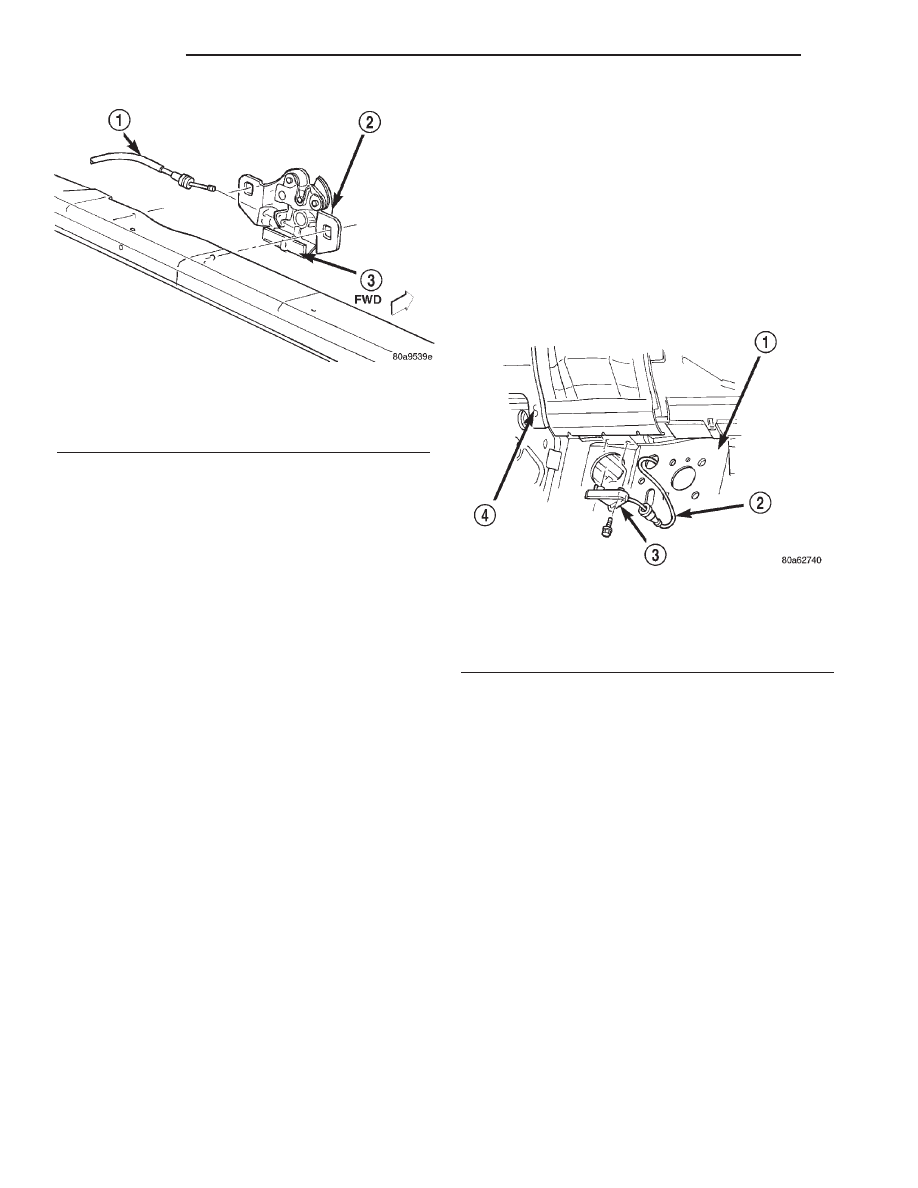Dodge Dakota (R1). Manual - part 775

INSTALLATION
(1) Connect release cable to hood latch.
(2) Position hood latch on crossmember. Ensure
the bottom flange of hood latch (Fig. 5) is secured
around the latch bracket (Fig. 4).
(3) Install the bolts attaching hood latch to radia-
tor closure panel crossmember. Tighten the bolts to
10.7 N·m (80 in. lbs.) torque.
(4) Close hood.
(5) Adjust latch as necessary.
ADJUSTMENTS
(1) Open the hood.
(2) Loosen the hood latch screws.
(3) Move the latch to the correct location and
lightly tighten the screws.
(4) Close the hood slowly and observe the latching
operation.
(5) As necessary, adjust the latch position and
tighten the screws.
HOOD RELEASE CABLE
REMOVAL
(1) Release primary hood latch.
(2) Release hood safety catch and open hood.
(3) Remove hood latch.
(4) Disconnect release cable from hood latch (Fig.
5).
(5) Detach the release cable and the retainer clips
in the engine compartment.
(6) Separate the release cable grommet from the
dash panel hole.
(7) From the inside of the vehicle, remove the
screws attaching the hood release handle to the bot-
tom of the instrument panel (Fig. 6).
(8) Pull/route the hood release cable through the
dash panel hole and remove it via the inside of the
vehicle.
INSTALLATION
NOTE: If replacement hood latch is also being
installed, ensure that it is thoroughly lubricated.
(1) From inside the vehicle, pull/route the hood
release cable through the dash panel hole and into
the engine compartment.
(2) Install the hood release handle.
(3) Install the cable grommet in the dash panel
hole.
(4) Attach the retainer clips to the release cable
and install them into the holes in the engine com-
partment.
(5) Attach release cable to hood latch.
(6) Install hood latch.
(7) Test the hood latch release cable for proper
operation.
Fig. 5 Hood Release Cable
1 - HOOD RELEASE CABLE
2 - HOOD LATCH
3 - BOTTOM FLANGE
Fig. 6 Hood Release Cable
1 - DASH PANEL
2 - HOOD RELEASE CABLE
3 - HOOD RELEASE HANDLE
4 - INSTRUMENT PANEL
23 - 88
HOOD
AN
HOOD LATCH (Continued)